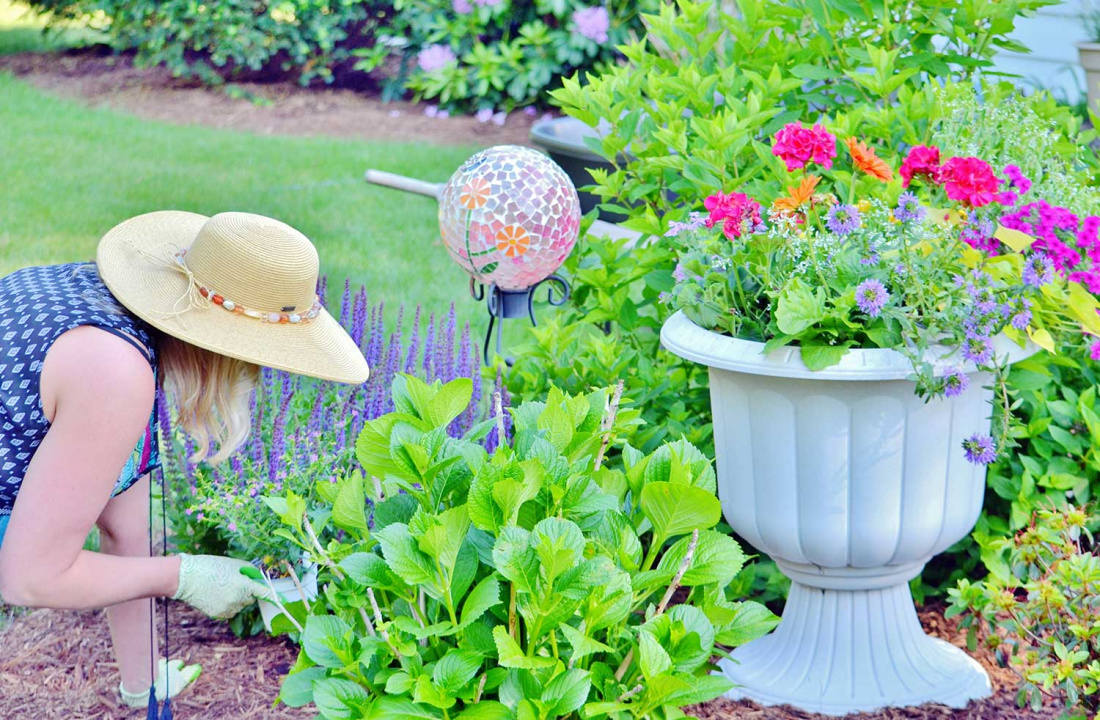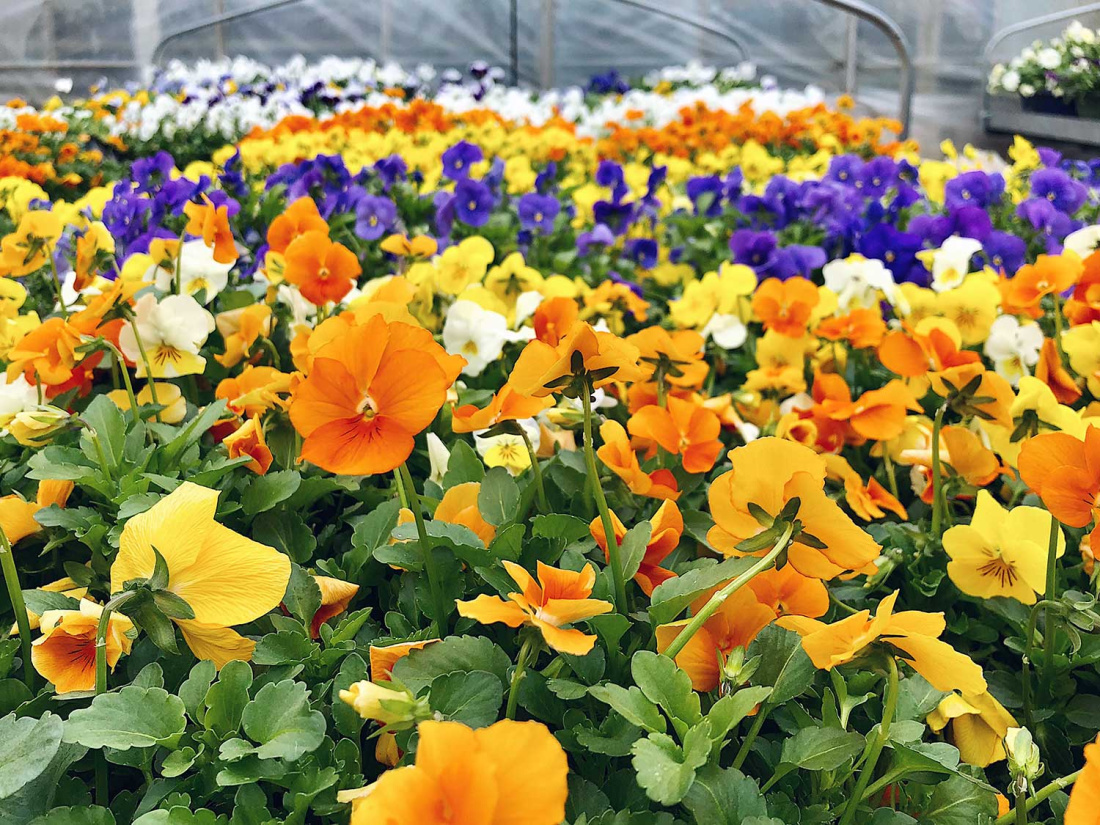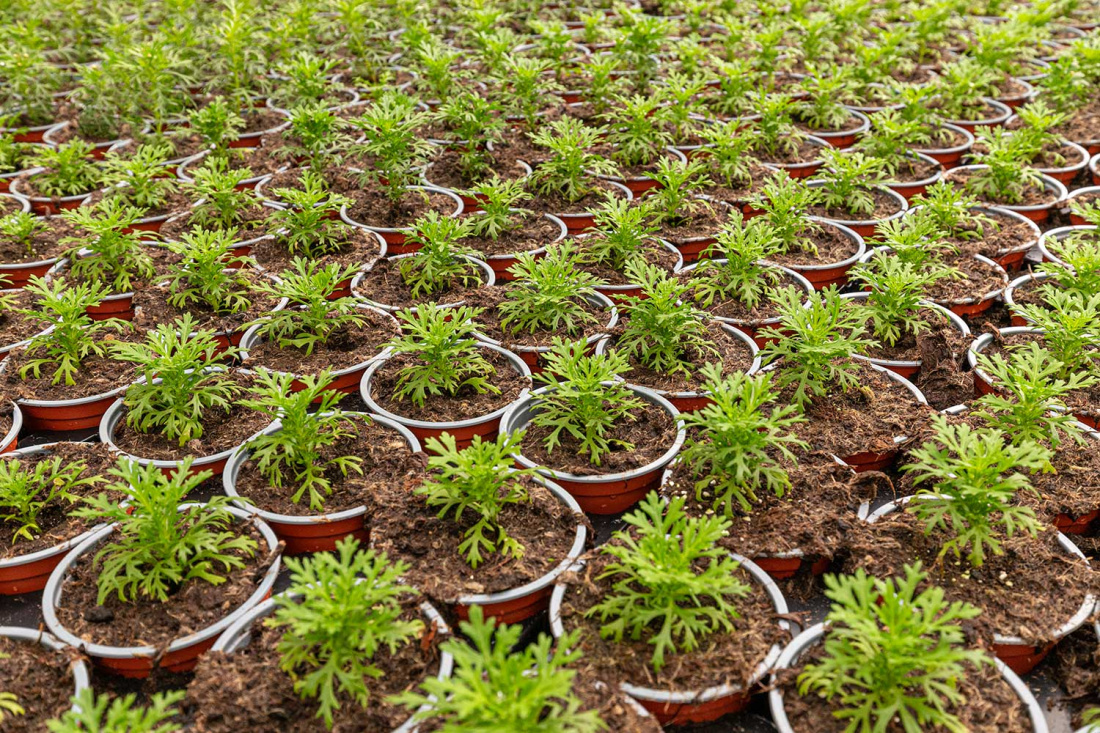Annual flowering plants produce quick and dazzling displays of color throughout the garden. Annual plants grow, flower, develop seed heads and fade away in the space of one year or less. While this short lifecycle means gardeners must either sow seeds or buy seedlings to replace the spent plants every year, the effort is worthwhile. The array of colors, fragrances, heights, and shapes possible in your garden using annuals is limited only by your imagination.
Here are a few things you need to know to get the best out of your annual flowering plants.

Planning for Your Annual Flowering Plants
With thousands of plant varieties to choose from, a little planning is necessary to select the best types for your garden. Think about the purpose, intended location, and whether to purchase seeds or seedlings.
Purpose
Ask yourself what you want to achieve with your new plantings. For example, are you screening out a landscape problem or desire some color on your porch using hanging baskets or pots? Maybe you need to brighten a dull corner in the garden or want to impress passersby with a spectacular blaze of color seen from the street. Purpose drives the type of plant you need — tall to screen out large items, trailing for hanging baskets, or a combination of heights and shapes to create a colorful border.
Garden Position
Have you thought about whether the flowering plants you’re considering will suit the planned location? Most annuals do best with full sun – at least six hours of sunshine most days. However, some varieties will tolerate shade or semi-shade. These include cineraria, impatiens, pansies, and violas.
Another concern is your garden soil. Most annual plants grow well in loam; others thrive in light sandy soil; some tolerate clay. Fortunately, you can adapt your soil to meet plant needs. For example, use gypsum to break up clay, dig manure and hay in to improve nutrient levels and water holding, or add sand to improve poor draining soil.
And lastly, check whether your new plants are going to need protection from wind or frost. If so, you may have to find a spot where surrounding plants provide wind or frost protection.

Deciding Your Color Palette
Along with planning for purpose and position, no doubt you’ve been thinking about color placement and grouping. Will you opt for bold colors in large groups of plants, small clumps of vivid contrasting color amongst perennial bushes, artful borders of mixed pastels, or subtle, neutral combinations of green, silver, and white? Your aesthetic preferences are important but don’t be afraid to experiment with unusual color groupings, heights, and shapes.
Color Wheel Inspiration
If you’re stuck for inspiration on what annual plants to grow, a simple color wheel can help inspire your garden design. Using color combinations from opposite sides of the color wheel can make dazzling floral displays. For example, imagine iridescent blue lobelia paired with bright orange marigolds. Or a range of hues from the warm colors may appeal to you – think of the effect of orange, yellow and red poppies in clumps or drifts throughout your garden.
Now it’s just a matter of seeking out the plants that match the color hues you want. Here are just a few widely grown flowering annuals to get you thinking about color selection.
Blue Tones
Planting ageratum will give you light blue fluffy flowers perfect as border edgings. Cornflowers have a deeper vibrant blue with striking open flowerheads and taller growth. Several varieties of viola and pansy give months of flowering in purple and blue hues.
Red Tones
The papery open petals of poppies range from white through to light and deep yellows, pastel pinks, vibrant orange, and deep red. Zinnias have a similar color range, sporting large daisy-type flower heads. Both are medium-height plants. On the other hand, the striking cleome is a tall annual, growing to three or four feet in height. Their light and deep pink hues in clumps against a green background make a strong focal point in the garden.
Yellow Tones
Trailing nasturtiums, dwarf marigolds, medium height marigolds, snapdragons, and zinnias all have yellow-hued varieties. Mix with blue flowering annuals to really ‘pop’ both colors.
Whites and Neutrals
White or green plants make a good contrast with any other plant colors. Impatiens, lobelia, and alyssum are all low-growing annuals in white shades. Many daisy varieties provide primarily white flowerheads with different colored centers and are available in differing heights. You can work subtle green shades of flowering plants such as amaranth, Bells of Ireland, and some zinnias into garden beds for a distinctive look. Green and white colors combined with silver or light pastel hues bring a feeling of serenity to the garden.

Selecting Your Plants
Seeds or Seedlings?
It takes more work to grow flowers from seed, but you do get much more value for money. Seed packets provide many more potential flowering plants than does a punnet of seedlings. Additionally, you have access to many more varieties of plants through buying seed packets, as most nurseries have comparatively few seedlings in stock. Online garden shopping has opened up access to a vast range of annual flower seeds, including heirloom and rare varieties.
If you don’t have the time or inclination to fuss around with growing from seeds, then seedlings are the obvious way to go. Choose plants that look strong and sturdy, avoid badly overcrowded, floppy, or yellowing ones.
Climate Zones
The enormous variation in weather and climate patterns across the US are factors you have to consider when deciding on your annual plantings. Checking for climate zone requirements via online gardening resources or with an experienced local nursery should identify an extensive range of seeds or seedlings that will thrive in your garden.
Getting the Best Out of Your Display
Regular fertilizing and deadheading of your annual plants will extend the flowering season and increase the number of blooms they produce. Aim to provide a liquid feeding every three to four weeks to keep plants healthy and vigorous.
Check out Garden and Bloom’s blog and plantabase for more free gardening tips and plant advice.


